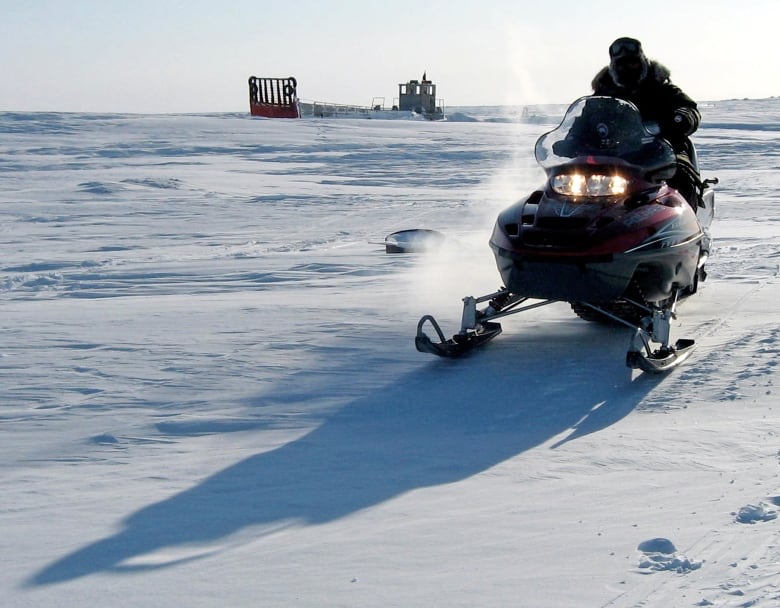Polar bears not the only animals affected by disappearing ice: Bob McDonald
Loss of sea ice affects movement and development of many plant and animal species

This year saw yet another dramatic loss of sea ice in the Arctic Ocean, with levels at the second lowest in recorded history. The iconic image of a polar bear stranded on a small ice floe has come to symbolize this change in the North, but many other animals and even plants are feeling the changes as well.
Ice is a transportation corridor used by animals, plants, and, of course, ice road truckers to get around vast polar regions that would otherwise be inaccessible. Polar bears walk many kilometres out on the ice to hunt seals, and caribou use ice to travel between the thousands of islands that make up the Arctic Archipelago. Plants also take advantage of the fact that ice moves from place to place, driven by ocean currents and winds to spread their seeds and pollen across the region.
The loss of these ice roads has forced animals to find longer, alternative routes or swim instead of walk, which consumes more energy, and that can affect their long-term survival.

Polar bears have already been recorded spending more time on land, scrounging for berries and small mammals, which do not provide the same nutrition as seals, causing some bear populations to appear thinner and more emaciated.
Caribou number in the millions and cover a huge range from the Canadian boreal forest all the way around circumpolar regions. But many populations are in serious decline because climate change is exacerbating other challenges they face, including deteriorating habitats and predation.
Island environments
A recent study looked at the endangered Peary caribou, a subspecies that lives among the High Arctic islands in Nunavut and the Northwest Territories. The animals use sea ice to travel between islands that are used as breeding grounds and foraging areas. The loss of ice means they have to take longer, alternative routes to get to the islands or swim, both of which make the journey more difficult. The report states that travel between these islands has become 15 per cent more difficult since 1979 because of the loss of ice.
If this trend continues, the animals might chose to just remain on individual islands, which would produce isolated populations, which would in turn reduce genetic diversity and, over time, could make the groups different from each other.
Islands have different environments, even when they are relatively close to each other, and animals, adapting to their new home, can change their form or behaviour. Darwin saw this among the different shaped beaks of finches on the Galapagos Islands, which provided much of the evidence he needed to develop his theory of natural selection.
Another effect of living on an island is to make large animals smaller, because resources are more limited. In a worst-case scenario, they can become overpopulated in the smaller range, eat up all the resources and drive themselves to extinction.
Plants migrate, too
A second report looked at northern plants to show how they have used the movement of ice or the fur of animals on the ice to spread themselves across the Arctic regions. It's a technique that has enabled plants from the south to migrate northwards since the last ice age.

In an interesting twist, the study shows that the loss of sea ice could cut off that northern migration of plants and actually preserve the Arctic species from being replaced by southern invaders.
These studies underline once again how the dramatic changes in the North are affecting every element of the ecosystem. Some species like the caribou are suffering. Others, such as marine organisms, are benefiting from the extra sunlight penetrating the open water. Traditional Inuit hunters are having a harder time crossing the ice while Arctic tourism is booming.
How these changes will manifest in the long term is uncertain, because there are so many interconnected systems involved, but as the global average temperature continues to rise, the image of the frozen North will clearly not be the same.

